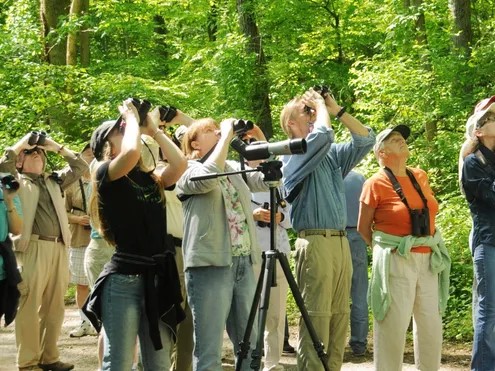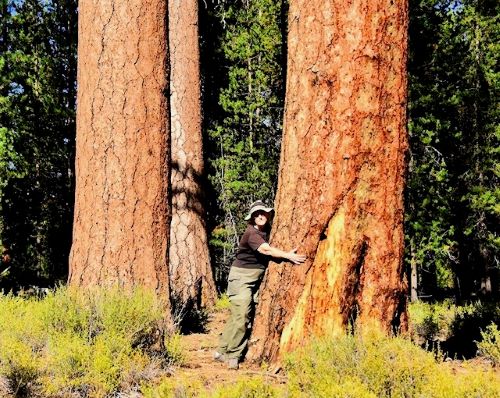The 3rd Saturday Bird Outing on July 20 will be at Clearwater Park in Springfield…
 Bird migration is one of the true marvels of the natural world. Some 350 species of North American breeding birds make the arduous journey north to take advantage of burgeoning insect populations, budding plants, and an abundance of nesting locations. Often they follow the same route to their summer homes, year after year. Northern summers offer longer daylight hours and more insect food to help them nest, feed, and fledge their young in a short span of time–six to eight weeks! It is a very efficient process, even though they had to make the long trip north.
Bird migration is one of the true marvels of the natural world. Some 350 species of North American breeding birds make the arduous journey north to take advantage of burgeoning insect populations, budding plants, and an abundance of nesting locations. Often they follow the same route to their summer homes, year after year. Northern summers offer longer daylight hours and more insect food to help them nest, feed, and fledge their young in a short span of time–six to eight weeks! It is a very efficient process, even though they had to make the long trip north.
At our property in the south hills of Eugene, we welcome Tree Swallows and Violet-green Swallows to our nest boxes each year. As they set up their nests, the box choices are remarkably consistent year-to-year. The northwest corner of the property is primarily Tree Swallows and the southwest corner is Violet-green Swallow nests. The pattern has been this way for at least a decade. I surmise that the same birds, or their young, return each year and perpetuate the localized nest box choices.
Sometimes we have found a dead adult bird in a box shortly after its arrival. We assume the bird was exhausted and perhaps starved, but just made it back to its preferred nesting site with its last effort. These small birds struggle to reach the breeding territory through many challenges. Travel of two thousand miles or more, winds and weather, searching for food and rest sites, exposure to predators and human-caused hazards make it a life-or-death struggle.
And yet, when they arrive on their breeding territory they fill the air with their songs and calls that sound like sheer joy. Their acrobatic flights and chases thrill us each day. The swallows build their nests and lay eggs. The egg incubation time is about 21 days, then for the next 21 days the parents hunt insects to feed their young. The chicks develop and grow quickly, until they are the same size as the adults. We are sometimes able to witness their successful fledge, when they leap from the nest box, closely followed by their parents and other swallows. The sky fills with local breeding swallows, excited to see the young out of the nest for the first time. We do indeed feel happy when we see this event each year.
The birds reward us by eating insects that could be mosquitos or pests in our fruit trees. It is so worth it, for them and for us!



